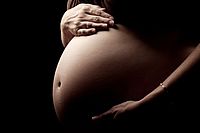
On April 11, the CDC published new postpartum statistics that Katherine Stone discusses in her post “CDC Releases Latest Statistics on PPD Today,” which you can get to by clicking here. Wall Street Journal’s health blog on these numbers by Jacob Goldstein was an interesting read:
Want to reduce your chances of suffering from depression after you have a baby? Stay in school, don’t rush into things and get married first. The Health Blog doesn’t mean to preach at you; we’re just reporting on data published today by the CDC.
After crunching survey results from 17 states, the agency found that in every single state, maternal age, marital status, maternal education and Medicaid coverage were “significantly associated” with postpartum depression.
Other factors that raised the risk included having a low birth weight infant, using tobacco during pregnancy and experiencing traumatic or financial stress.
Overall rates for the condition — which can occur any time in the year after delivery, and is more serious than the “baby blues” that strike when the baby’s a few days old — ranged from 12% in Maine to 20% in New Mexico in the states included in the survey.
Because the results are based on self-reporting and aren’t confirmed by a physician, they may tend to produce an estimate that is a bit too high, the authors note. It’s also likely that some women who were depressed — but not as a result of having a baby — were classified with postpartum depression.
PPD can affect the well-being of the baby, because mothers with the condition may be less likely to engage with the infant and more likely to discontinue breastfeeding. The authors suggest using demographic factors to identify women at risk at the time of delivery and get them into a follow-up screening for depression a month or so later.

